The disappearance of built environments is happening now especially in the post-war surroundings. Buildings of the modern era suffer from a lack of empathy.
If we slow down the demolition culture, can we find something under the skin? Are we losing something we don’t understand by demolishing? The concrete frame of a modern building serves as a guideline for the anatomy of the building. We should demolish and deconstruct our thinking, not our buildings.
Finding perspectives on how to preserve existing built environments and neighborhoods is more relevant than ever. The ongoing climate crisis forces us to take a more careful look at the processes of how neighborhoods are built: not via demolition but preserving and reusing.
Emotional labor is always present when working with decaying buildings but is hardly taken into consideration in demolition processes. How can we digest trauma or feelings related to built environments from the 1960s and 1970s?
Listening Practice is an architectural design and research club founded by Karita Rytivaara and Kaisa Karvinen, which examines the architectural field and challenges its conventions by using social and patient methods. We visit and document the demolition processes. We visit archives and build concrete models of buildings that are already demolished or will be demolished.
Demolition is often seen as a sudden act of erasing in which the building is just disappearing from the cityscape. For us, demolition should be seen as a step-by-step process that requires different evaluations in different stages of the demolition. Learning from the materials and visual experiences of the surroundings could be a key to preserve and reuse them.
Emotional labor is present when working with decaying buildings but is hardly taken into consideration in demolition processes. We should examine the architectural field and challenge its conventions by social and patient methods. In the Listening Practice, we visit and document the demolition processes. We visit archives and build models of buildings that are already demolished or will be demolished. We share our research by using texts, photographs and concrete models.
The climate crisis forces us to take a more careful look at the processes of how decaying modern neighborhoods are built: not via demolition but reusing.
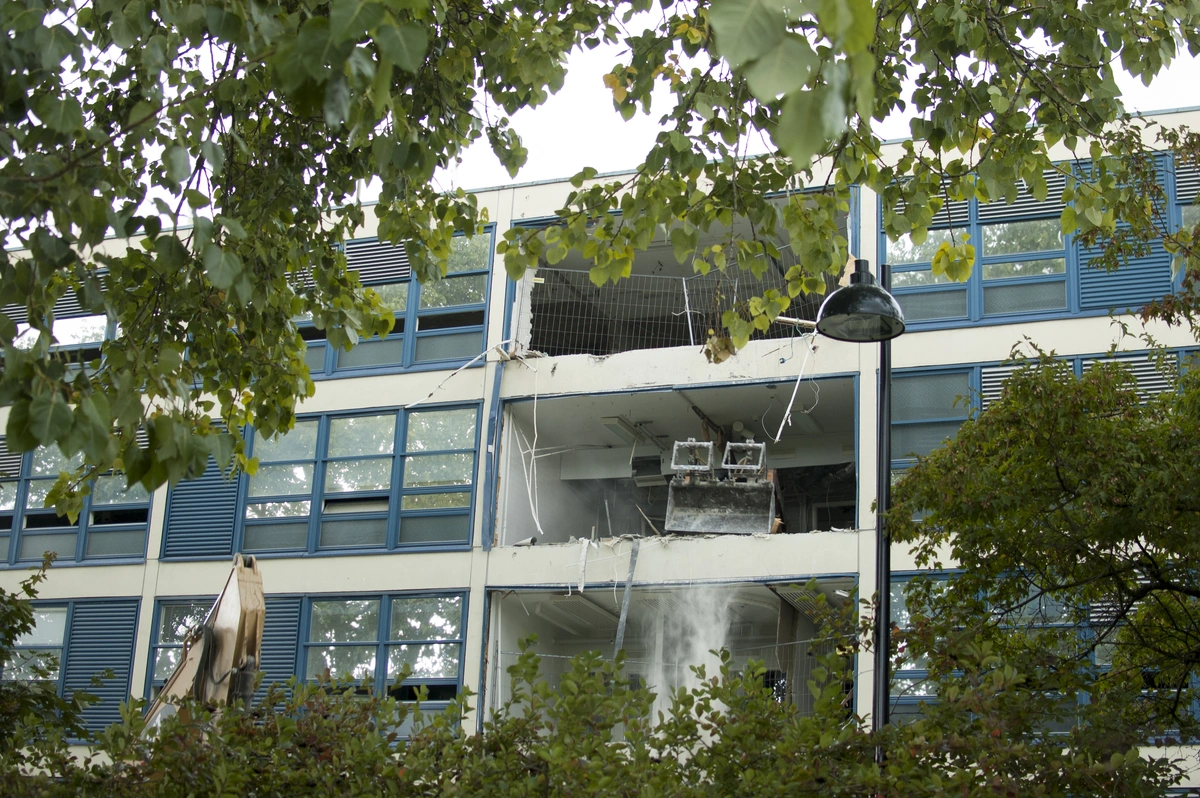
A demolition site at Gyldenintie 2, Helsinki 2021. Photo:Listening practice
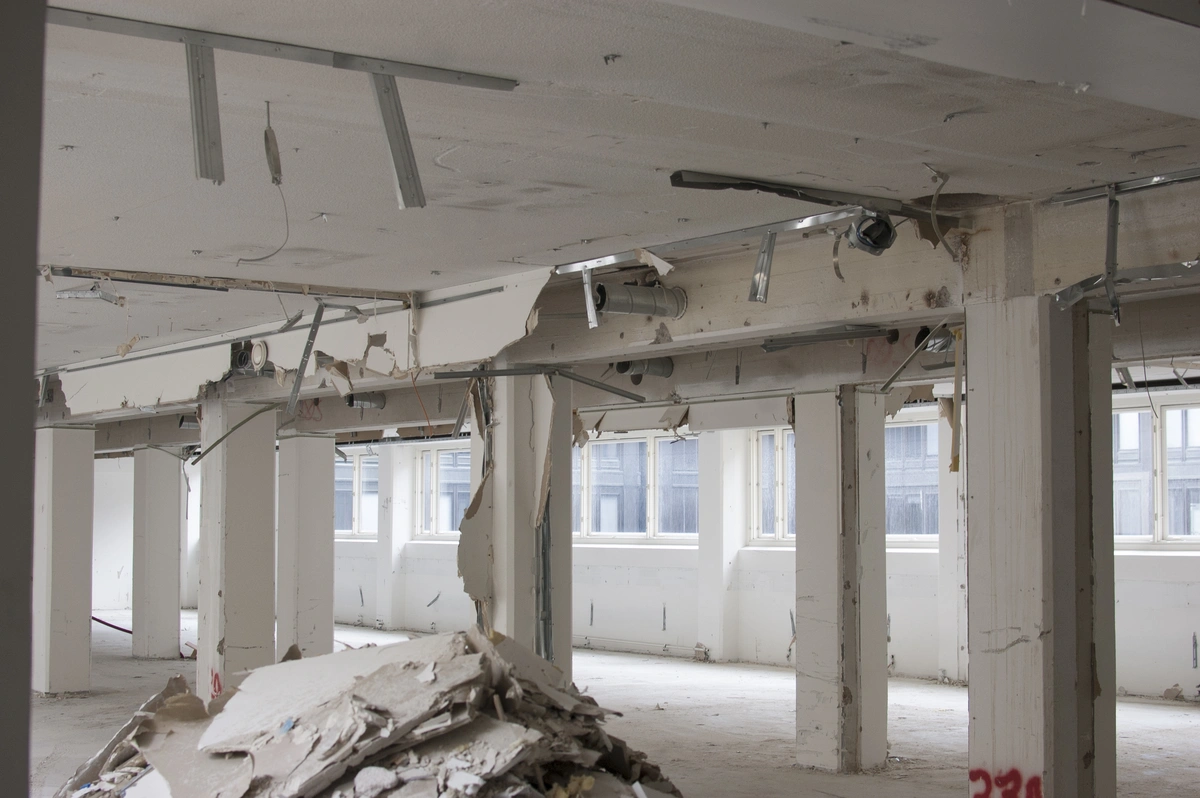
A demolition site at Aleksis Kiven Katu, Helsinki 2021. Photo:Listening Practice
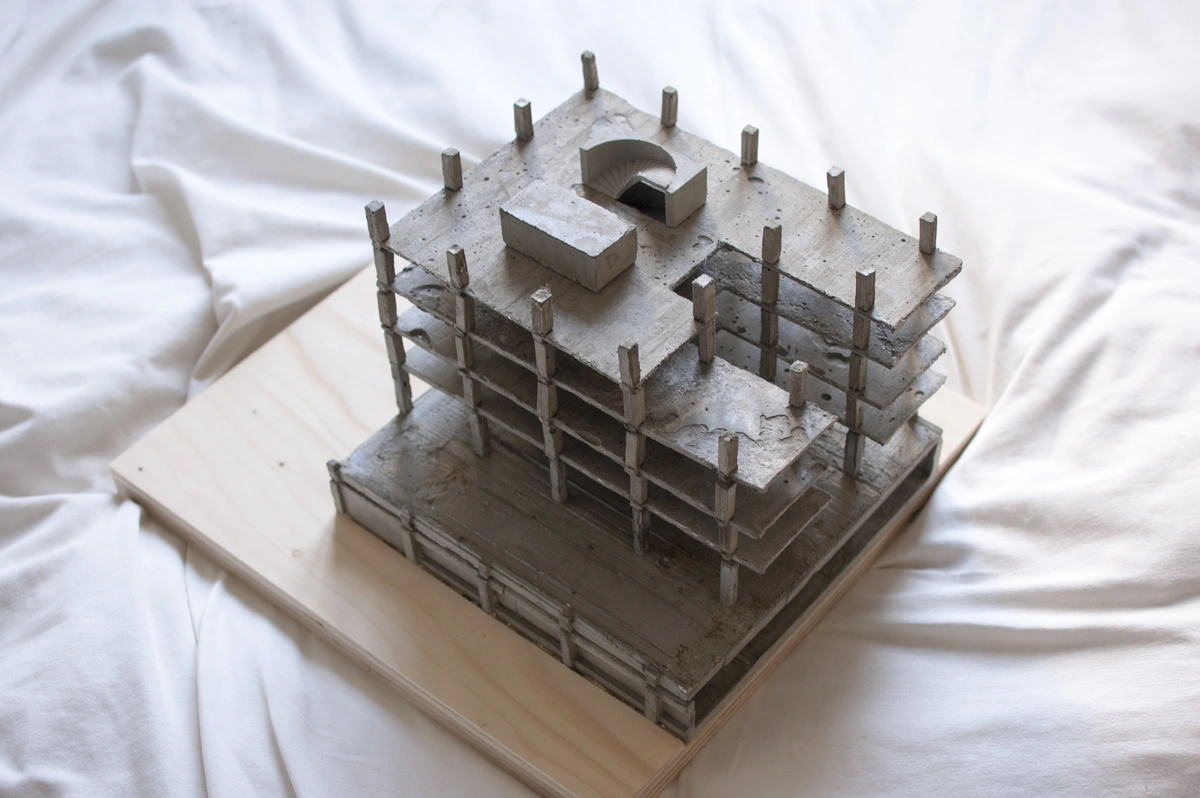
Section model of Espoo City Hall (1971). The office buildig will be demolished soon. The model is made out of concrete year 2021 and it studies the frame of the building. Photo:Listening Practice
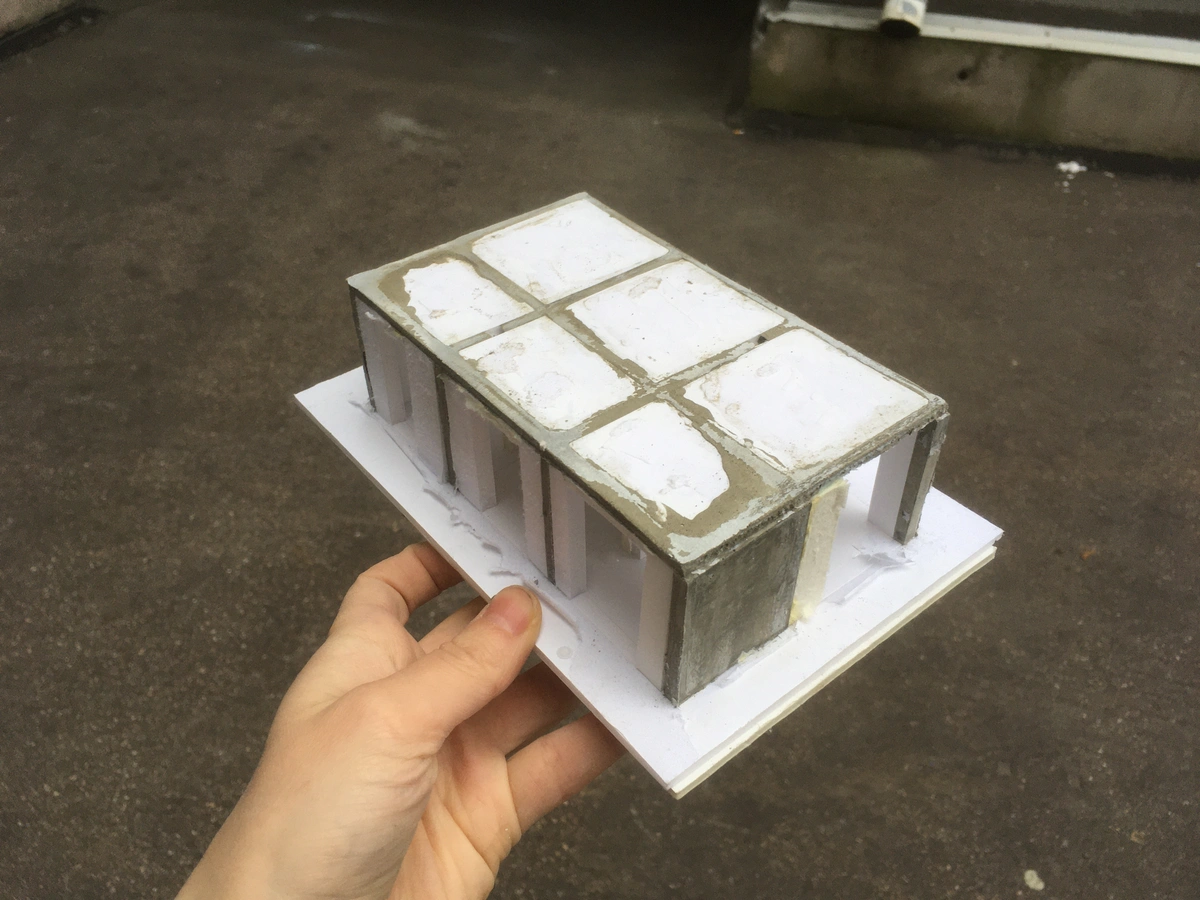
Making of Hyrylä Heat Plant (1968) scale model. The model is made out of concrete year 2021 and it studies the frame of the building. The Heat plant was demolished 2017. Photo:Listening Practice
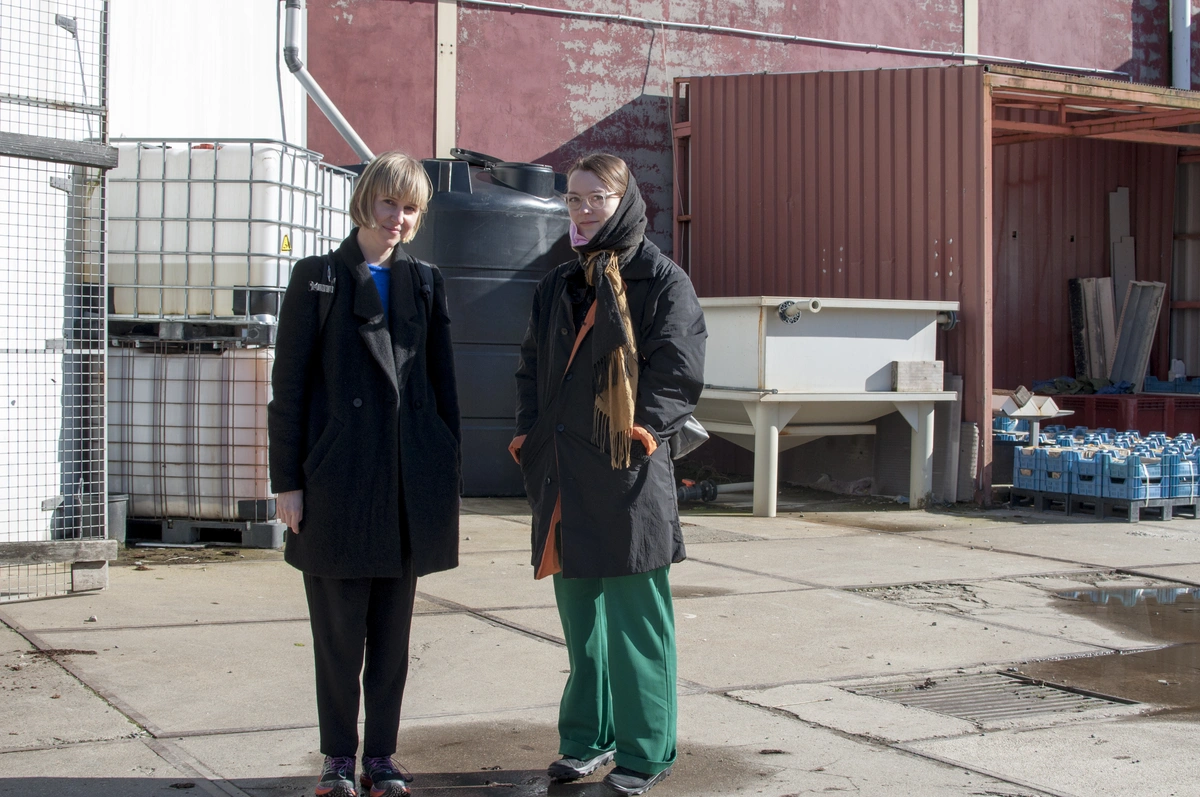
The Architectural design and reseach team Listening Practice: Kaisa Karvinen and Karita Rytivaara.
Listening Practice is an architectural design and research club founded by Karita Rytivaara and Kaisa Karvinen, which examines the architectural field and challenges its conventions by using social and patient methods.
Kaisa Karvinen is an architect, PHD-researcher, co-founder of the Trojan Horse platform and curator of the Reconfiguring Territories research program. With Listening Practice she is interested in the ways we construct pictures of the places we don’t physically visit. Can the idea of care materialize from a distance?
Karita Rytivaara has been working as an architect in the restoration, renovation and conversion field and has experience with a wide range of historically protected surroundings. Her own passion is post war modernism and analyzing it’s future possibilities. In addition she is a University teacher and researcher. For her, design decisions should be connected to the place and history. Material that we are surrounded with should be investigated patiently.